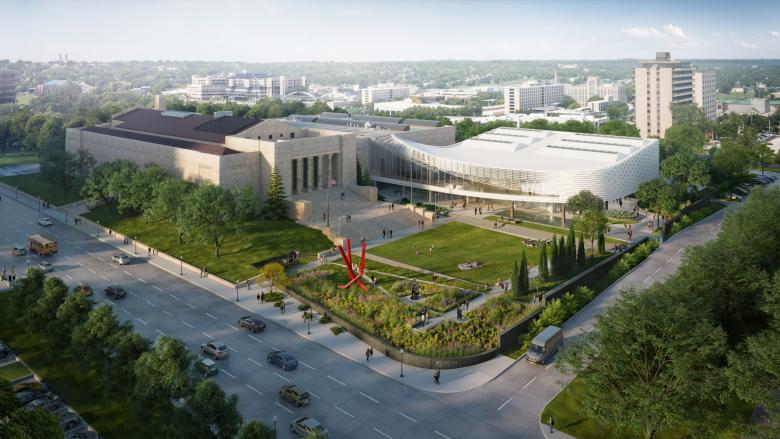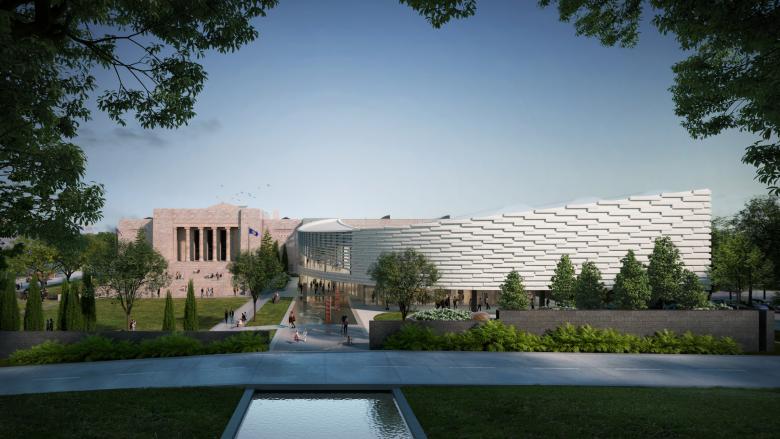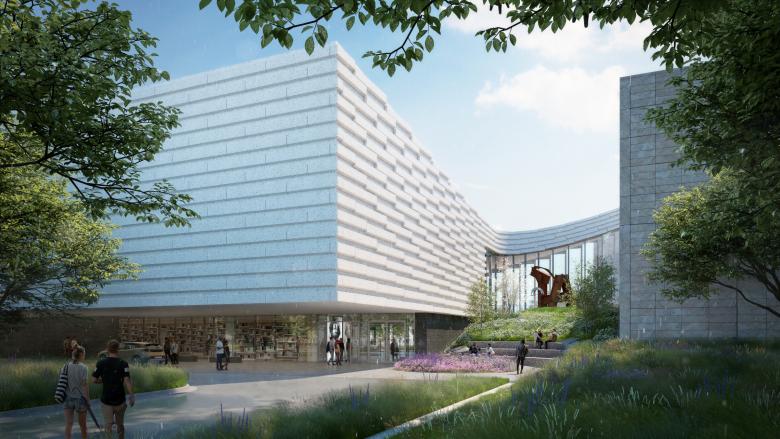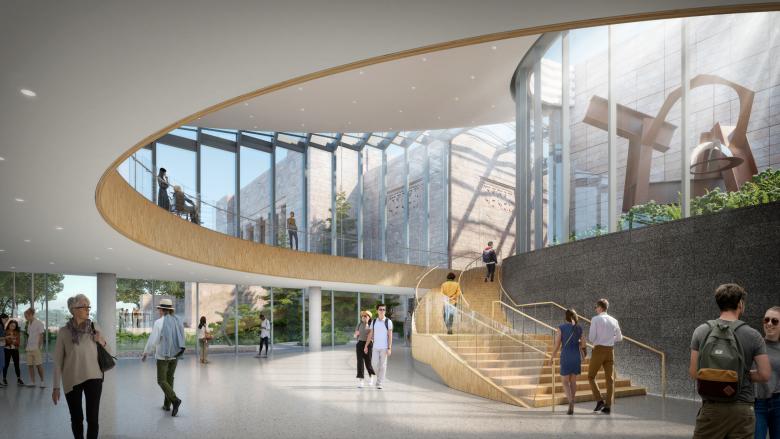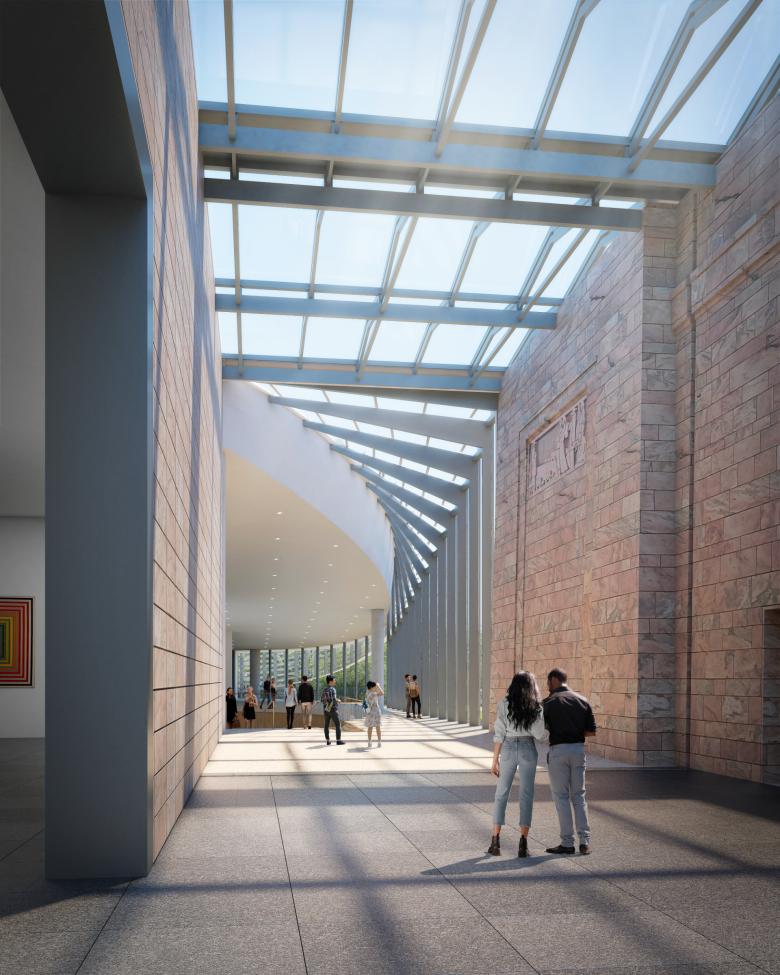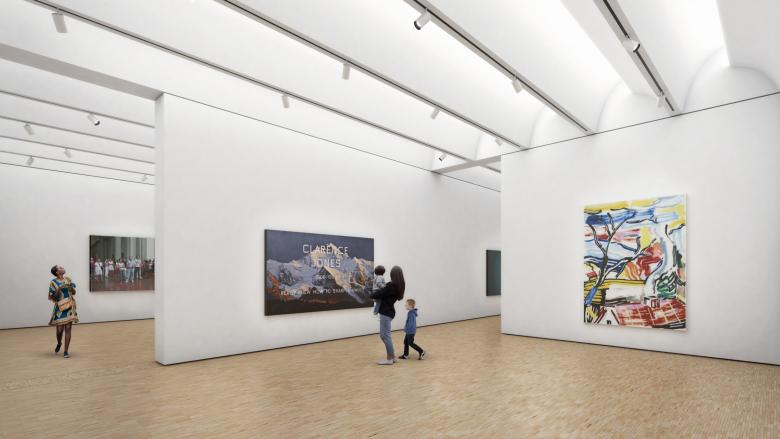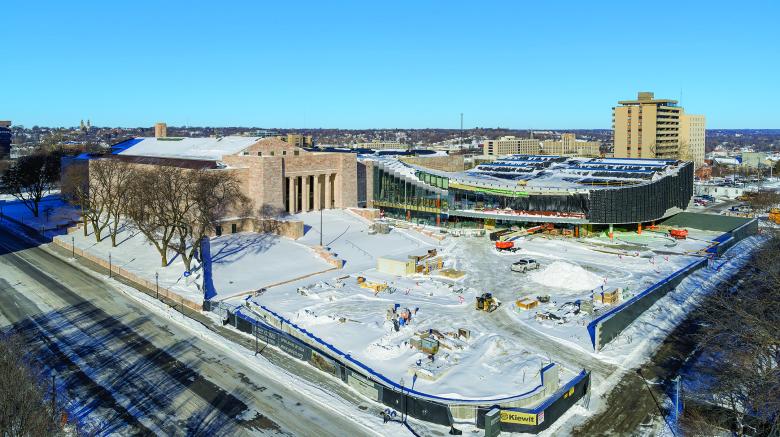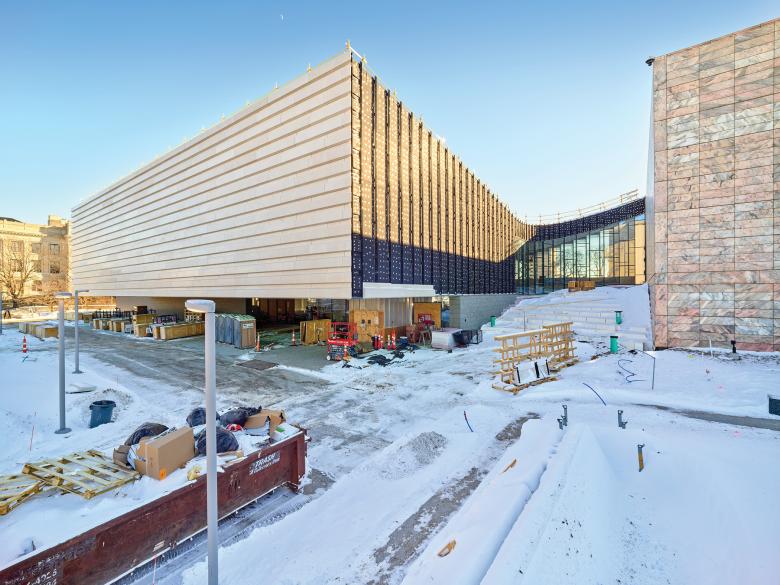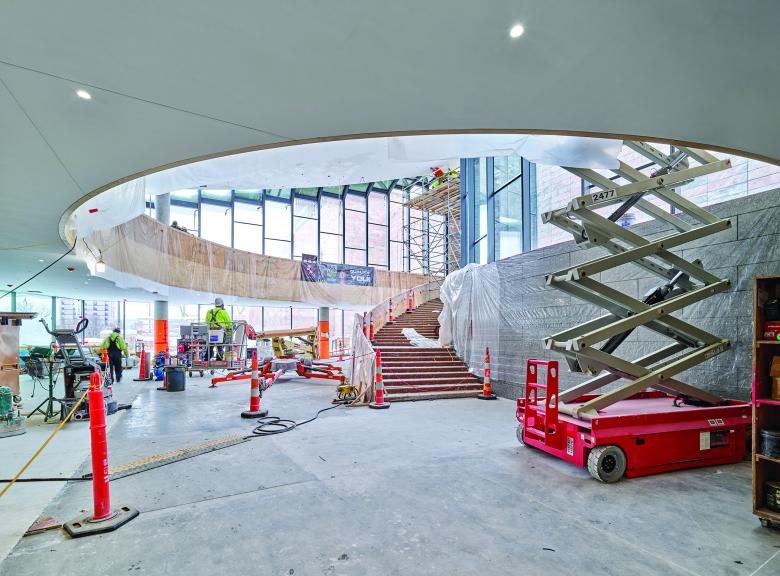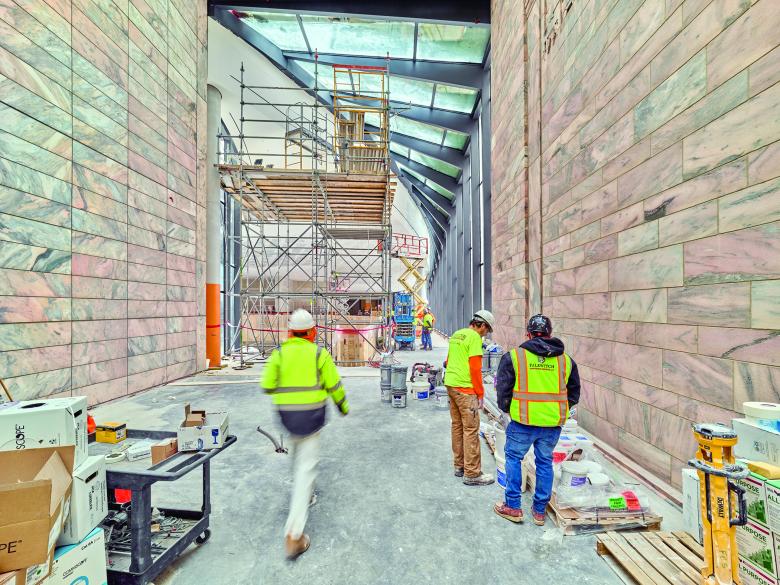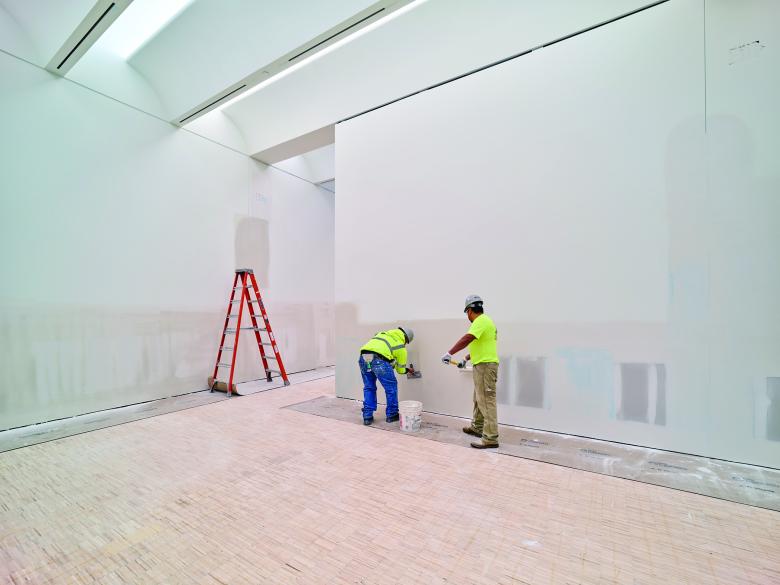28. February 2024
Southeast aerial view of the Joslyn Art Museum (Rendering courtesy of Moare)
The Joslyn Art Museum has announced it will reopen on September 10, 2024, with the completion of the new Rhonda & Howard Hawks Pavilion designed by Snøhetta with Alley Poyner Macchietto Architecture (APMA). It is the museum's first expansion since the wing designed by Foster + Partners opened in 1994.
I had visited the Joslyn Art Museum in the mid-1990s, not long after the addition designed by Norman Foster opened, so I had questions when recently seeing renderings and construction photos of the new expansion designed by Snøhetta and APMA. For instance, why, when Foster's building so carefully strove to balance itself — in terms of massing and materiality — with the 1931 Art Deco original, does the new wing sit squarely in front of the Foster wing, effectively negating that balance? And why does the new building depart dramatically from its two predecessors, creating curves where none were found before and opting for light-colored precast panels instead of pink granite? Answers to these and other questions were given at a recent gathering where members of the museum and Snøhetta talked to the press.
East elevation of the Joslyn Building, Hawks Pavilion, central lawn, and courtyard garden (Rendering courtesy of Moare)
According to Craig Dykers, founding partner at Snøhetta, creating a better sense of entry was a paramount concern for the design team. For decades, the grand steps facing east led to the museum's main entrance, but those doors were subsequently closed and the entrance shifted when Foster's addition was completed. Foster bookended the museum's old east elevation with a granite facade in matching height and proportions, while a recessed glass facade in between became the new entrance. Logical on paper and accentuated by a fountain and sculpture in alignment with it, the new entrance was nevertheless deemed hard to find, especially for people arriving from the parking lot to the north.
Northwest view of the new Hawks Pavilion entry drive (Rendering courtesy of Moare)
So Dykers and the rest of the team decided to treat the ground floor of the new wing as the entrance, enabling access to happen from the sculpture garden on the south, the parking lot on the north, and from the east side of the pavilion. Given that most people reach the museum by driving, they will enter the new Hawks Pavilion from the north, as in the rendering above. Rather than abutting the new wing against the Foster wing, Snøhetta and APMA left a gap, filling it with a small raised landscape that allows the granite facade to be seen from inside the new lobby space, as in the below rendering.
Hawks Pavilion entry atrium with views of the Joslyn Building, Scott Pavilion, and arrival garden (Rendering courtesy of Moare)
Dykers further described how the 1931 original, designed by John and Alan McDonald, seems to grow out of the landscape, but Foster's design, in its modern massing, merely sits on the ground, imposing itself on the landscape. A third option was then needed, Dykers contended, one that takes a different approach to thinking about the land and the sky. Lifting the building up to allow the ground plane to continue into the building therefore allows for multiple access points and, in combination with light-colored precast panels, gives the impression of a lighter building — not quite a cloud, but cloud-like compared to the granite predecessors.
Interior twist connection looking into the new Hawks Pavilion from the glass atrium that connects itto the Joslyn Building and Scott Pavilion (Rendering courtesy of Moare)
With the glass facade of the atrium in the Foster expansion no longer serving as the main entrance, Snøhetta was able to “plug” the new pavilion into the existing museum buildings at that point, extending it outwards in the form of a curving, low-slung volume. This link, as seen in the rendering above, makes it seem as if the skylights of the Foster atrium continue outwards, twisting to become the walls of the exhibition galleries on the second floor of the new pavilion. The pavilion's galleries, which will expand the museum's exhibition space by 40%, sit beneath sculpted ceilings that introduce indirect natural light.
Gallery view inside the new Hawks Pavilion (Rendering courtesy of Moare)
Below are a handful of construction photographs showing progress on the Rhonda & Howard Hawks Pavilion ahead of its September opening.
